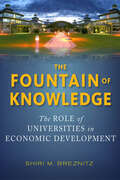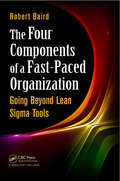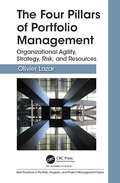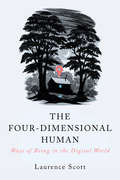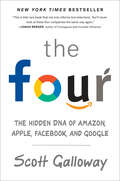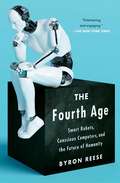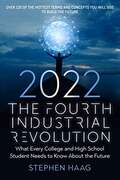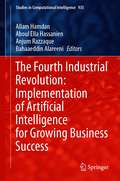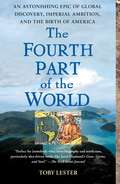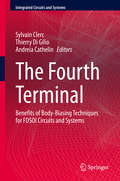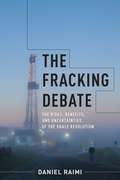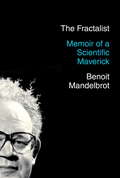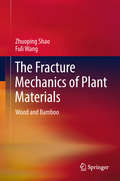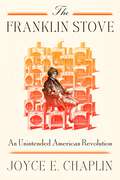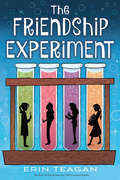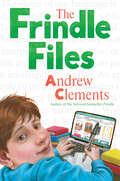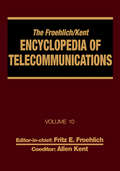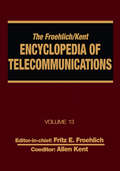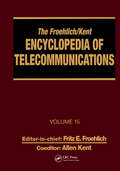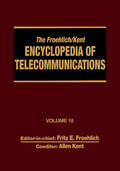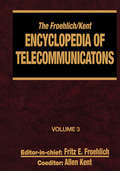- Table View
- List View
The Fountain of Knowledge: The Role of Universities in Economic Development
by Shiri M. BreznitzToday, universities around the world find themselves going beyond the traditional roles of research and teaching to drive the development of local economies through collaborations with industry. At a time when regions with universities are seeking best practices among their peers, Shiri M. Breznitz argues against the notion that one university's successful technology transfer model can be easily transported to another. Rather, the impact that a university can have on its local economy must be understood in terms of its idiosyncratic internal mechanisms, as well as the state and regional markets within which it operates. To illustrate her argument, Breznitz undertakes a comparative analysis of two universities, Yale and Cambridge, and the different outcomes of their attempts at technology commercialization in biotech. By contrasting these two universities—their unique policies, organizational structure, institutional culture, and location within distinct national polities—she makes a powerful case for the idea that technology transfer is dependent on highly variable historical and environmental factors. Breznitz highlights key features to weigh and engage in developing future university and economic development policies that are tailor-made for their contexts.
The Four Components of a Fast-Paced Organization: Going Beyond Lean Sigma Tools
by Robert BairdThis book examines the four components that must be in place for manufacturing and service organizations to achieve world-class business results: leadership and mentoring, process design and visual value streams, organization structure for sustainment, and fast knowledge sharing. The book illustrates the author‘s actual experience working on a special Lean Sigma transformation at an organization going through a market alteration and having to consider outsourcing production to low-cost countries. The text illustrates how the four key components helped them achieve a doubling of productivity, a 75% improvement to their yield, and on time delivery above 90%.
The Four Pillars of Portfolio Management: Organizational Agility, Strategy, Risk, and Resources (Best Practices in Portfolio, Program, and Project Management)
by Olivier LazarPortfolio management consists mainly of making decisions about which initiatives to undertake, which initiatives not to pursue, and which resources are to be allocated to which portfolio component. At least, that’s how it is most commonly presented in textbooks and courses. Indeed, it is all of that, but it is also so much more. Portfolio management is, of course, about making these decisions, but, more accurately, it is about making them with the goal of creating value for an organization’s wide population of stakeholders, both internal and external. This value is not only expressed in financial terms but also in social terms. The portfolio should create value for all stakeholders, who thereby support the portfolio organization and enable it to sustain itself. Portfolio management is about the realization of strategic vision, achieving a purpose, and developing an intelligent way of using resources to benefit stakeholders. This requires the ability to find a balance among the different dimensions of portfolio governance and among the constraints constantly shaping and reshaping the business environment. This is what portfolio management is truly about; this is what organizational management is about. The Four Pillars of Portfolio Management: Organizational Agility, Strategy, Risk, and Resources takes readers on a journey navigating the dimensions and constraints to be balanced and integrated as part of the portfolio and organizational decision-making process. By balancing the requirements of strategic alignment with the exposure to risk and by reconciling resource demands with capability, a portfolio manager can develop and sustain an organization despite the constant and dynamic evolution of the business environment. This book explains how to manage portfolios that create the agility all organizations require to survive and thrive.
The Four-Dimensional Human: Ways of Being in the Digital World
by Laurence ScottYou are a four-dimensional human. Each of us exists in three-dimensional, physical space. But, as a constellation of everyday digital phenomena rewires our lives, we are increasingly coaxed from the containment of our predigital selves into a wonderful and eerie fourth dimension, a world of ceaseless communication, instant information, and global connection. Our portals to this new world have been wedged open, and the silhouette of a figure is slowly taking shape. But what does it feel like to be four-dimensional? How do digital technologies influence the rhythms of our thoughts, the style and tilt of our consciousness? What new sensitivities and sensibilities are emerging with our exposure to the delights, sorrows, and anxieties of a networked world? And how do we live in public with these recoded private lives? Laurence Scott—hailed as a “New Generation Thinker” by the Arts and Humanities Research Council and the BBC—shows how this four-dimensional life is dramatically changing us by redefining our social lives and extending the limits of our presence in the world. Blending tech-philosophy with insights on everything from Seinfeld to the fall of Gaddafi, Scott stands with a rising generation of social critics hoping to understand our new reality. His virtuosic debut is a revelatory and original exploration of life in the digital age.
The Four: The Hidden DNA of Amazon, Apple, Facebook, and Google
by Scott Galloway<P>Amazon, Apple, Facebook, and Google are the four most influential companies on the planet. Just about everyone thinks they know how they got there. Just about everyone is wrong. <P>For all that’s been written about the Four over the last two decades, no one has captured their power and staggering success as insightfully as Scott Galloway. Instead of buying the myths these companies broadcast, Galloway asks fundamental questions. How did the Four infiltrate our lives so completely that they’re almost impossible to avoid (or boycott)? Why does the stock market forgive them for sins that would destroy other firms? And as they race to become the world’s first trillion-dollar company, can anyone challenge them? <P>In the same irreverent style that has made him one of the world’s most celebrated business professors, Galloway deconstructs the strategies of the Four that lurk beneath their shiny veneers. He shows how they manipulate the fundamental emotional needs that have driven us since our ancestors lived in caves, at a speed and scope others can’t match. And he reveals how you can apply the lessons of their ascent to your own business or career. Whether you want to compete with them, do business with them, or simply live in the world they dominate, you need to understand the Four. <P><b>A New York Times Bestseller</b>
The Fourth Age: Smart Robots, Conscious Computers, and the Future of Humanity
by Byron Reese&“The Fourth Age not only discusses what the rise of A.I. will mean for us, it also forces readers to challenge their preconceptions. And it manages to do all this in a way that is both entertaining and engaging.&” —The New York Times As we approach a great turning point in history when technology is poised to redefine what it means to be human, The Fourth Age offers fascinating insight into AI, robotics, and their extraordinary implications for our species.In The Fourth Age, Byron Reese makes the case that technology has reshaped humanity just three times in history: - 100,000 years ago, we harnessed fire, which led to language. - 10,000 years ago, we developed agriculture, which led to cities and warfare. - 5,000 years ago, we invented the wheel and writing, which lead to the nation state. We are now on the doorstep of a fourth change brought about by two technologies: AI and robotics. The Fourth Age provides extraordinary background information on how we got to this point, and how—rather than what—we should think about the topics we&’ll soon all be facing: machine consciousness, automation, employment, creative computers, radical life extension, artificial life, AI ethics, the future of warfare, superintelligence, and the implications of extreme prosperity. By asking questions like &“Are you a machine?&” and &“Could a computer feel anything?&”, Reese leads you through a discussion along the cutting edge in robotics and AI, and, provides a framework by which we can all understand, discuss, and act on the issues of the Fourth Age, and how they&’ll transform humanity.
The Fourth Industrial Revolution 2022: What Every College and High School Student Needs to Know About the Future
by Stephen HaagThe next 20 years will be the most innovative period of time in the history of the world. Why? <p><p> Because we are at the very beginning of the fourth industrial revolution. We have seen the tech, we know it works. It’s getting better, cheaper, faster, and smaller all the time. The tech has been invented, and it's now time to innovate and disrupt. <p><p> That tech includes: <p>• Internet of (All) Things (IoT) <p>• Artificial Intelligence (AI) <p>• Cryptocurrency & Blockchain <p>• Extended Reality (Augmented Reality, Mixed <p>• Reality, and Virtual Reality) <p>• 3D Printing <p>• Autonomous Vehicles <p>• Drones <p>• Energy Harvesting <p>• Communications Technologies <p>• Sensing Technologies (Seeing, Hearing, <p>• Feeling, and Smelling) <p>• Quantum Computing <p>• Nanotechnology <p><p> Those technologies provide the foundation for an entirely new disruption vocabulary including: 3D reprinting, bioprinting, biometrics, cryptocurrency exchanges and wallets, decentralized autonomous organizations (DAOs), decentralized apps (Dapps), decentralized finance (DeFi), digital twins, distributed ledger technology (DLT), edge computing, eVTOL, energy harvesting, fintech, haptic technology, holograms, Lidar, metaverse, non-fungible tokens (NFTs), neural networks, piezoelectricity, renewable energy, smart everything… cities, contracts, grids, homes, mirrors… solar power, stablecoins, the Web 3.0, and so very much more.
The Fourth Industrial Revolution: Implementation of Artificial Intelligence for Growing Business Success (Studies in Computational Intelligence #935)
by Aboul Ella Hassanien Allam Hamdan Anjum Razzaque Bahaaeddin AlareeniThis book focuses on the implementation of AI for growing business, and the book includes research articles and expository papers on the applications of AI on decision-making, health care, smart universities, public sector and digital government, FinTech, and RegTech. Artificial Intelligence (AI) is a vital and a fundamental driver for the Fourth Industrial Revolution (FIR). Its influence is observed at homes, in the businesses and in the public spaces. The embodied best of AI reflects robots which drive our cars, stock our warehouses, monitor our behaviors and warn us of our health, and care for our young children. Some researchers also discussed the role of AI in the current COVID-19 pandemic, whether in the health sector, education, and others. On all of these, the researchers discussed the impact of AI on decision-making in those vital sectors of the economy.
The Fourth Part of the World: The Race to the Ends of the Earth, and the Epic Story of the Map That Gave America Its Name
by Toby Lester“Old maps lead you to strange and unexpected places, and none does so more ineluctably than the subject of this book: the giant, beguiling Waldseemüller world map of 1507.” So begins this remarkable story of the map that gave America its name.For millennia Europeans believed that the world consisted of three parts: Europe, Africa, and Asia. They drew the three continents in countless shapes and sizes on their maps, but occasionally they hinted at the existence of a "fourth part of the world," a mysterious, inaccessible place, separated from the rest by a vast expanse of ocean. It was a land of myth—until 1507, that is, when Martin Waldseemüller and Matthias Ringmann, two obscure scholars working in the mountains of eastern France, made it real. Columbus had died the year before convinced that he had sailed to Asia, but Waldseemüller and Ringmann, after reading about the Atlantic discoveries of Columbus’s contemporary Amerigo Vespucci, came to a startling conclusion: Vespucci had reached the fourth part of the world. To celebrate his achievement, Waldseemüller and Ringmann printed a huge map, for the first time showing the New World surrounded by water and distinct from Asia, and in Vespucci’s honor they gave this New World a name: America. The Fourth Part of the World is the story behind that map, a thrilling saga of geographical and intellectual exploration, full of outsize thinkers and voyages. Taking a kaleidoscopic approach, Toby Lester traces the origins of our modern worldview. His narrative sweeps across continents and centuries, zeroing in on different portions of the map to reveal strands of ancient legend, Biblical prophecy, classical learning, medieval exploration, imperial ambitions, and more. In Lester’s telling the map comes alive: Marco Polo and the early Christian missionaries trek across Central Asia and China; Europe’s early humanists travel to monastic libraries to recover ancient texts; Portuguese merchants round up the first West African slaves; Christopher Columbus and Amerigo Vespucci make their epic voyages of discovery; and finally, vitally, Nicholas Copernicus makes an appearance, deducing from the new geography shown on the Waldseemüller map that the earth could not lie at the center of the cosmos. The map literally altered humanity’s worldview. One thousand copies of the map were printed, yet only one remains. Discovered accidentally in 1901 in the library of a German castle it was bought in 2003 for the unprecedented sum of $10 million by the Library of Congress, where it is now on permanent public display. Lavishly illustrated with rare maps and diagrams, The Fourth Part of the World is the story of that map: the dazzling story of the geographical and intellectual journeys that have helped us decipher our world.
The Fourth Terminal: Benefits of Body-Biasing Techniques for FDSOI Circuits and Systems (Integrated Circuits and Systems)
by Sylvain Clerc Thierry Di Gilio Andreia CathelinThis book discusses the advantages and challenges of Body-Biasing for integrated circuits and systems, together with the deployment of the design infrastructure needed to generate this Body-Bias voltage. These new design solutions enable state of the art energy efficiency and system flexibility for the latest applications, such as Internet of Things and 5G communications.
The Fracking Debate: The Risks, Benefits, and Uncertainties of the Shale Revolution (Center on Global Energy Policy Series)
by Daniel RaimiOver roughly the past decade, oil and gas production in the United States has surged dramatically—thanks largely to technological advances such as high-volume hydraulic fracturing, more commonly known as “fracking.” This rapid increase has generated widespread debate, with proponents touting economic and energy-security benefits and opponents highlighting the environmental and social risks of increased oil and gas production. Despite the heated debate, neither side has a monopoly on the facts. In this book, Daniel Raimi gives a balanced and accessible view of oil and gas development, clearly and thoroughly explaining the key issues surrounding the shale revolution.The Fracking Debate directly addresses the most common questions and concerns associated with fracking: What is fracking? Does fracking pollute the water supply? Will fracking make the United States energy independent? Does fracking cause earthquakes? How is fracking regulated? Is fracking good for the economy? Coupling a deep understanding of the scholarly research with lessons from his travels to every major U.S. oil- and gas-producing region, Raimi highlights stories of the people and communities affected by the shale revolution, for better and for worse. The Fracking Debate provides the evidence and context that have so frequently been missing from the national discussion of the future of oil and gas production, offering readers the tools to make sense of this critical issue.
The Fractalist
by Benoit MandelbrotA fascinating memoir from the man who revitalized visual geometry, and whose ideas about fractals have changed how we look at both the natural world and the financial world.Benoit Mandelbrot, the creator of fractal geometry, has significantly improved our understanding of, among other things, financial variability and erratic physical phenomena. In The Fractalist, Mandelbrot recounts the high points of his life with exuberance and an eloquent fluency, deepening our understanding of the evolution of his extraordinary mind. We begin with his early years: born in Warsaw in 1924 to a Lithuanian Jewish family, Mandelbrot moved with his family to Paris in the 1930s, where he was mentored by an eminent mathematician uncle. During World War II, as he stayed barely one step ahead of the Nazis until France was liberated, he studied geometry on his own and dreamed of using it to solve fresh, real-world problems. We observe his unusually broad education in Europe, and later at Caltech, Princeton, and MIT. We learn about his thirty-five-year affiliation with IBM's Thomas J. Watson Research Center and his association with Harvard and Yale. An outsider to mainstream scientific research, he managed to do what others had thought impossible: develop a new geometry that combines revelatory beauty with a radical way of unfolding formerly hidden laws governing utter roughness, turbulence, and chaos. Here is a remarkable story of both the man's life and his unparalleled contributions to science, mathematics, and the arts.
The Fracture Mechanics of Plant Materials: Wood And Bamboo
by Zhuoping Shao Fuli WangThis book introduces readers to the application of fracture mechanics and mesomechanics to the analysis of the fracture behaviors of wood and bamboo. It presents a range of research methods to study the fracture behaviors of wood and bamboo, taking into account their various fracture mechanisms resulting from differences in their macroscopic and microscopic structures. It combines theoretical analysis with experiments, as well as various mathematical tools and experimental approaches. The research methods are illustrated by simple schematic diagrams, and the results obtained are largely presented as tables and figures, helping to make the book concise and compact. As such, it provides a valuable guide to the development of new biocomposites that possess exceptional strength and toughness properties and successfully overcome the shortcomings of biomaterials.
The Fracture of Brittle Materials: Testing and Analysis
by Stephen W. Freiman John J. Mecholsky Jr.Provides a modern, practical approach to the understanding and measurement procedures relevant to the fracture of brittle materials <P><P>This book examines the testing and analysis of the fracture of brittle materials. Expanding on the measurement and analysis methodology contained in the first edition, it covers the relevant measurements (toughness and strength), material types, fracture mechanics, measurement techniques, reliability and lifetime predictions, microstructural considerations, and material/test selection processes appropriate for the analysis of the fracture behavior of brittle materials. <P><P>The Fracture of Brittle Materials: Testing and Analysis, Second Edition summarizes the concepts behind the selection of a test procedure for fracture toughness and strength, and goes into detail on how the statistics of fracture can be used to assure reliability. <P><P>It explains the importance of the role of microstructure in these determinations and emphasizes the use of fractographic analysis as an important tool in understanding why a part failed. The new edition includes a significant quantity of material related to the fracture of biomaterials, and features two new chapters—one on thermal shock, the other on the modeling of the fracture process. <P><P>It also expands on a discussion of how to treat the statistics of fracture strength data to ensure reliability. Provides practical analysis of fracture toughness and strength Introduces the engineering and materials student to the basic concepts necessary for analyzing brittle fracture <P><P>Contains new statistical analysis procedures to allow for the prediction of the safe design of brittle components <P><P>Contains real-world examples to assist the reader in applying the concepts to their own research, material development, and quality-control needs <P><P> The Fracture of Brittle Materials: Testing and Analysis, Second Edition is an important resource for all students, technicians, engineers, scientists, and researchers involved in the study, analysis, creation, or testing of ceramics.
The Franklin Stove: An Unintended American Revolution
by Joyce E. ChaplinA Washington Post Noteworthy Book of March"From Joyce Chaplin's engaging, wide-ranging pages a fresh Franklin emerges." —Stacy Schiff, Pulitzer Prize–winning author of The Revolutionary"[Chaplin's] expansive claims for the Franklin stove’s importance click into place." —Dan Piepenbring, Harper's"A fascinating, innovative, inventive look at a fascinating, innovative man and his inventions." —Charles C. Mann, bestselling author of The Wizard and the Prophet and 1491The surprising story of Benjamin Franklin’s most famous invention—and a new take on the Founding Father we thought we knew. The biggest revolution in Benjamin Franklin’s lifetime was made to fit in a fireplace. Assembled from iron plates like a piece of flatpack furniture, the Franklin stove became one of the era's most iconic consumer products, spreading from Pennsylvania to England, Italy, and beyond. It was more than just a material object, however—it was also a hypothesis. Franklin was proposing that, armed with science, he could invent his way out of a climate crisis: a period of global cooling known as the Little Ice Age, when unusually bitter winters sometimes brought life to a standstill. He believed that his stove could provide snug indoor comfort despite another, related crisis: a shortage of wood caused by widespread deforestation. And he conceived of his invention as equal parts appliance and scientific instrument—a device that, by modifying how heat and air moved through indoor spaces, might reveal the workings of the atmosphere outside and explain why it seemed to be changing. With his stove, Franklin became America’s first climate scientist.Joyce E. Chaplin’s The Franklin Stove is the story of this singular invention, and a revelatory new look at the Founding Father we thought we knew. We follow Franklin as he promotes his stove in Britain and France, while corresponding with the various experimenters who discovered the key gases in Earth's atmosphere, invented steam engines, and tried to clean up sooty urban air. During his travels back and forth across the Atlantic, we witness him taking measurements of the gulf stream and observing the cooling effect of volcanic ash from Iceland. And back in Philadelphia, we watch him hawk his invention while sparring with proponents of the popular theory that clearcutting forests would lead to warmer winters by reducing the amount of shade cover on the surface of the Earth. As the story of the Franklin stove shows, it’s not so easy to engineer our way out of a climate crisis; with this book, Chaplin reveals how that challenge is as old as the United States itself.
The Fresh Honey Cookbook: 84 Recipes from a Beekeeper's Kitchen
by Laurey MastertonIndulge your sweet tooth all year long with honey’s many seasonal flavors. Use avocado honey to add depth to April’s baby carrots; spice up your July peaches with sourwood honey; and add some cranberry honey to November’s Thanksgiving spread. This delightful book is filled with bits of honey lore and beekeeping history to sweeten your exploration of the varied and delicious ways you can use honey every day.
The Friendly Orange Glow: The Untold Story of the PLATO System and the Dawn of Cyberculture
by Brian DearAt a time when Steve Jobs was only a teenager and Mark Zuckerberg wasn’t even born, a group of visionary engineers and designers—some of them only high school students—in the late 1960s and 1970s created a computer system called PLATO, which was light-years ahead in experimenting with how people would learn, engage, communicate, and play through connected computers. Not only did PLATO engineers make significant hardware breakthroughs with plasma displays and touch screens but PLATO programmers also came up with a long list of software innovations: chat rooms, instant messaging, message boards, screen savers, multiplayer games, online newspapers, interactive fiction, and emoticons. Together, the PLATO community pioneered what we now collectively engage in as cyberculture. They were among the first to identify and also realize the potential and scope of the social interconnectivity of computers, well before the creation of the internet. PLATO was the foundational model for every online community that was to follow in its footsteps. The Friendly Orange Glow is the first history to recount in fascinating detail the remarkable accomplishments and inspiring personal stories of the PLATO community. The addictive nature of PLATO both ruined many a college career and launched pathbreaking multimillion-dollar software products. Its development, impact, and eventual disappearance provides an instructive case study of technological innovation and disruption, project management, and missed opportunities. Above all, The Friendly Orange Glow at last reveals new perspectives on the origins of social computing and our internet-infatuated world.
The Friendship Experiment
by Erin TeaganFuture scientist Madeline Little is dreading the start of middle school. Nothing has been right since her grandfather died and her best friend changed schools. Maddie would rather help her father in his research lab or write Standard Operating Procedures in her lab notebook than hang out with a bunch of kids who aren't even her friends. Despite Maddie's reluctance, some new friends start coming her way--until they discover what she's written in that secret notebook. And that's just part of the trouble. Can this future scientific genius find the formula for straightening out her life?
The Frindle Files
by Andrew ClementsIn the long-awaited follow-up to the beloved classic Frindle, a new generation of kids discovers the power of words and imagination – and yes, even screens – to solve a mystery and change their world! &“A fitting final work from a master storyteller.&”—Kirkus Reviews Josh Willet is a techie, a serious gamer. Which is why Josh and his friends can&’t stand Mr. N&’s ELA class; it&’s a strict no-tech zone. Mr. N makes them write everything out by hand, he won&’t use a Smartboard, and he&’s obsessed with some hundred-year-old grammar book. Then Josh discovers a secret; turns out Mr. N's been keeping a lot more than technology from his students! Together with his best friend Vanessa, and using all the computer skills they&’ve got, Josh is determined to solve the mystery of Mr. N&’s past. And maybe get some screentime back, too? Andrew Clements&’s final novel is a timely one—about the importance of language, the changes that come along with technology (good and bad), and how sometimes you have to challenge what you think you know. Set a whole generation later, this novel can be read on its own or alongside Frindle and is destined to become another timeless classic.
The Froehlich/Kent Encyclopedia of Telecommunications: Volume 10 - Introduction to Computer Networking to Methods for Usability Engineering in Equipment Design
by Allen Kent Fritz E. FroehlichIntroduction to Computer Networking to Methods for Usability Engineering in Equipment Design.
The Froehlich/Kent Encyclopedia of Telecommunications: Volume 13 - Network-Management Technologies to NYNEX
by Allen Kent Fritz E. FroehlichThis article reviews network-management problems, technologies and standards, outlining the problems and challenges of the field. It overviews the functions and architectures, of various components of network-management systems (NMSs), describing key network-management application areas.
The Froehlich/Kent Encyclopedia of Telecommunications: Volume 15 - Radio Astronomy to Submarine Cable Systems
by Allen Kent Fritz E. FroehlichThis is volume fifteen of the Encyclopedia of Telecommunications, which covers Radio Astronomy to Submarine Cable Systems in alphabetical listing and information on the contributors
The Froehlich/Kent Encyclopedia of Telecommunications: Volume 18 - Wireless Multiple Access Adaptive Communications Technique to Zworykin: Vladimir Kosma
by Allen Kent Fritz E. FroehlichVolume 18- Wireless Multiple Access Adaptive Communications Technique to Zworykin, Vladimir Kosma. The only continuing source that helps users analyze, plan, design, evaluate, and manage integrated telecommunications networks, systems, and services, The Froehlich/Kent Encyclopedia of Telecommunications presents both basic and technologically advanced knowledge in the field. An ideal reference source for both newcomers as well as seasoned specialists, the Encyclopedia covers seven key areas--Terminals and Interfaces; Transmission; Switching, Routing, and Flow Control; Networks and Network Control; Communications Software and Protocols; Network and system Management; and Components and Processes.
The Froehlich/Kent Encyclopedia of Telecommunications: Volume 3 - Codes for the Prevention of Errors to Communications Frequency Standards
by Allen Kent Fritz E. Froehlich"The only continuing source that helps users analyze, plan, design, evaluate, and manage integrated telecommunications networks, systems, and services, The Froehlich/Kent Encyclopedia of Telecommunications presents both basic and technologically advanced knowledge in the field. An ideal reference source for both newcomers as well as seasoned specialists, the Encyclopedia covers seven key areas--Terminals and Interfaces; Transmission; Switching, Routing, and Flow Control; Networks and Network Control; Communications Software and Protocols; Network and system Management; and Components and Processes."
The Froehlich/Kent Encyclopedia of Telecommunications: Volume 6 - Digital Microwave Link Design to Electrical Filters
by Allen Kent Fritz E. Froehlich"The only continuing source that helps users analyze, plan, design, evaluate, and manage integrated telecommunications networks, systems, and services, The Froehlich/Kent Encyclopedia of Telecommunications presents both basic and technologically advanced knowledge in the field. An ideal reference source for both newcomers as well as seasoned specialists, the Encyclopedia covers seven key areas--Terminals and Interfaces; Transmission; Switching, Routing, and Flow Control; Networks and Network Control; Communications Software and Protocols; Network and system Management; and Components and Processes."
